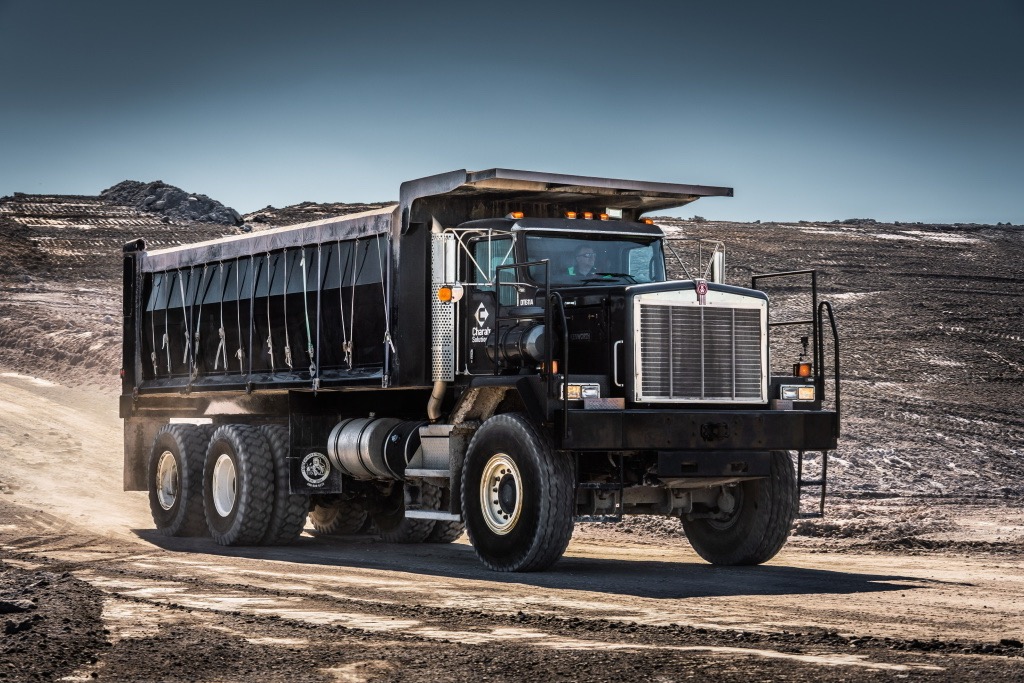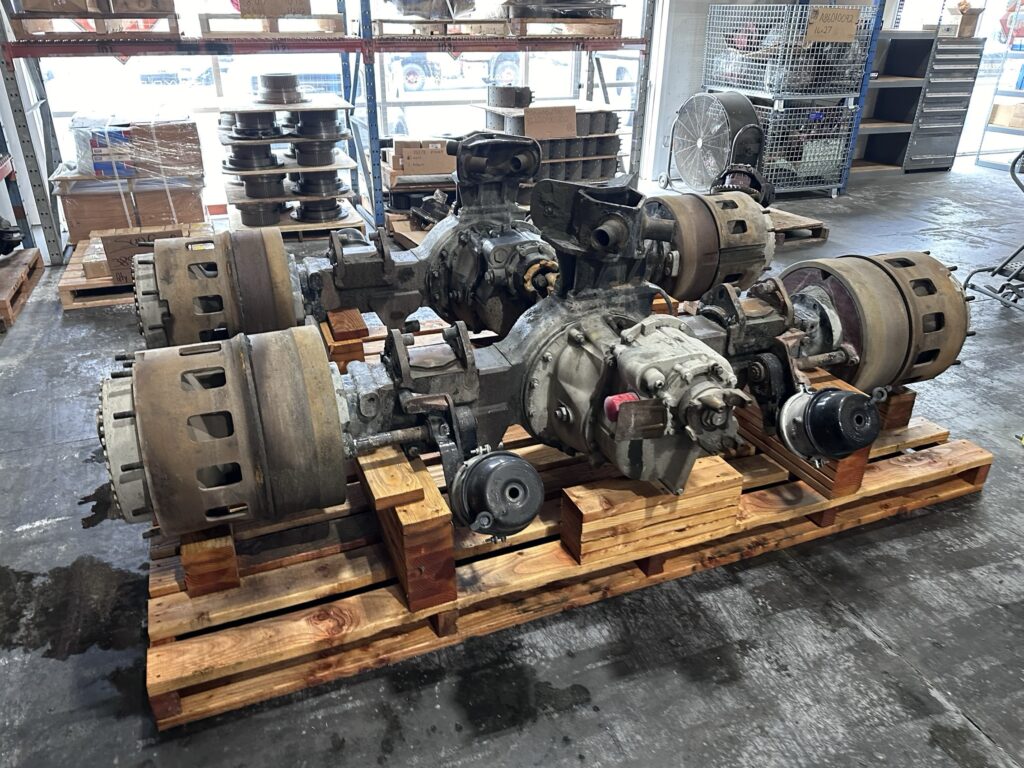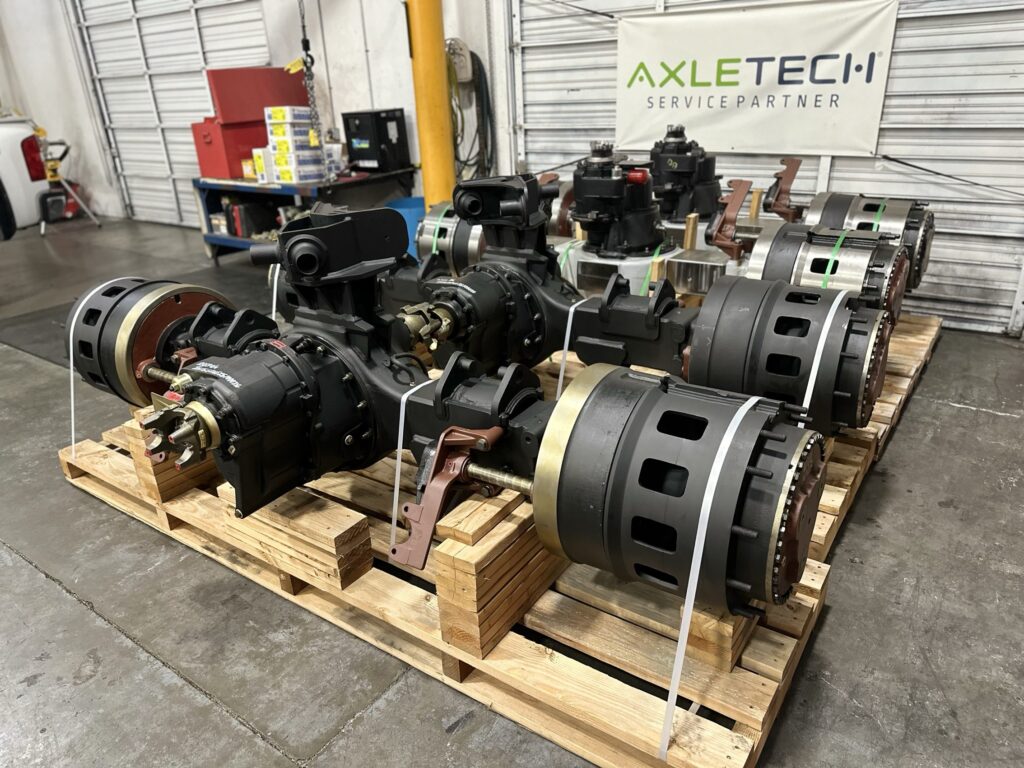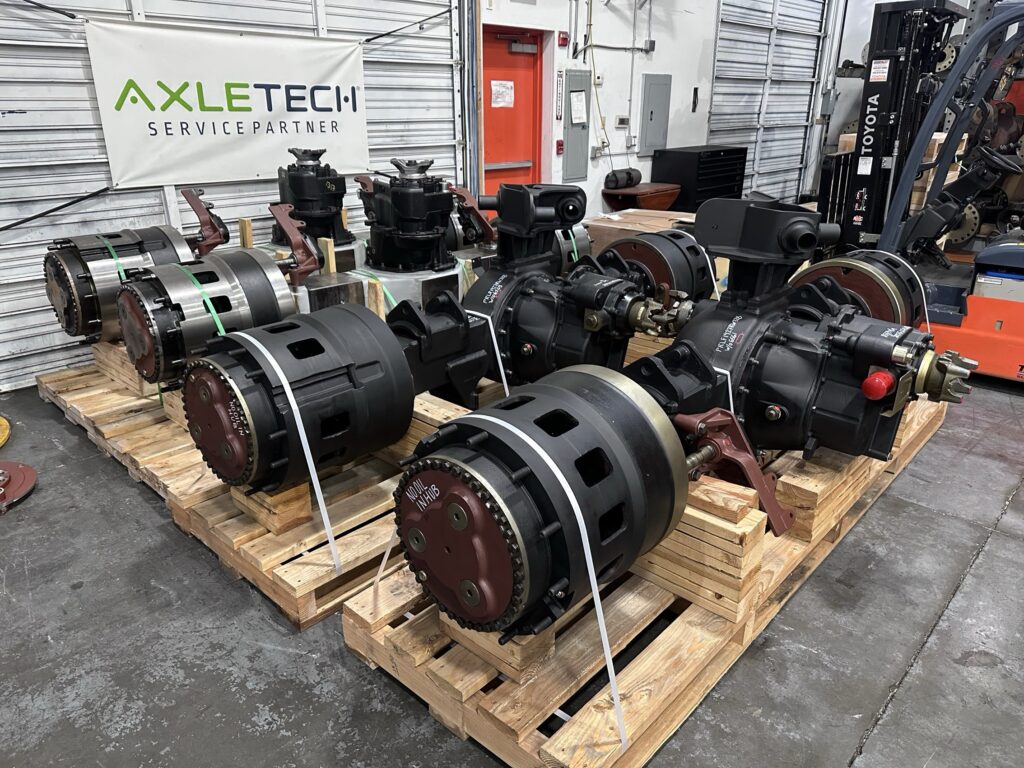Heavy Duty Transaxle Keeps Mining Operations Rolling in North America
Since its introduction in 1972, the Kenworth C500 Series truck has admirably serviced the most challenging off-road conditions, particularly in mining and oilfield operations. Known for its durability, reliability, and robust construction, the C500 is built to handle extreme environments. The C500 is particularly suited for mining operations, where heavy payloads and tough terrain are common.

Similarly, the Western Star 6900 HD Series truck, introduced in the mid 1990’s, is a powerhouse in the realm of heavy-duty trucks. Specifically engineered for the most demanding industrial applications, including mining, it is known for its exceptional durability, massive payload capacity, and robust performance.
Both trucks run AxleTech SPRC1927, SPRC1937, and SPRC2197 planetary rigid tandems, designed for extreme load application, high torque and demanding environments. While these axles are known for their longevity and reliability, years of use in difficult terrain will induce inevitable failures.
For several decades Heavy Duty Transaxle has provided one of the largest underground hard rock mining operations in Southeast Alaska with components, parts and rebuilt axles. Extracting copper, zinc and gold across three shifts 364 days per year requires the operation to plan accordingly: Their equipment must function reliably at all times. One to two years of run time on a truck is tripled because of the nature of their always-on shifts.
Consequently, several years ago HDT and the customer developed a scheduled maintenance plan for their large fleet. In the plan, the operation rotates six trucks out over a two year period, sending them south for service and rebuild.
The chassis of the C500’s are transported by barge to the Kenworth dealer in Fife, Washington, for a rebuild. Kenworth then sends the axles to the technical team at Heavy Duty Transaxle for a complete overhaul.
HDT technicians begin by stripping the axles down to their base components and the housings are rolled and checked for deflection. In an ideal world, the center and wheel ends should be in perfect alignment, but with load, heat, and time it is common for the metal to fatigue. Deflection testing is a critical step in the rebuild procedure; when deflection is beyond tolerance it cannot be seen with the naked eye, and if you do see warping with the naked eye it’s far too late.
Many mechanics also assume that a housing cannot warp – that it will just crack when it fails. But this is not the case. Housings do warp over time with heavy vertical download and repeated duty cycle. Consequently, a warped housing can induce premature failure of the differential or wheel end, which becomes an expensive failure in the field. Compounding the problem, when the diff or wheel end fails, even experienced mechanics assume it was the component itself that failed, when in fact it is the housing, which leads to repeated premature failure.
After all the components are checked to ensure they are within factory specifications, brand new, genuine Meritor/Axletech/Cummins OEM braking components are installed. This includes new shoes, drums, pins, sleeves, washers, bushings, springs, and seals.
All subassemblies, including planetaries, hubs, differentials, and brackets are restored to their OEM specification. The components are repainted and, depending on customer request, treated for rust prevention.
Ready for installation, the rebuilt axles are packaged up and sent to Kenworth for installation. The total time from start to finish is typically between 3-4 weeks at the HDT rebuild center, at a significant savings over the cost of a new set of axles.
Rather than waiting to experience equipment failure in the field, their forward-thinking maintenance team ensures their equipment is always up and running, eliminating downtime at the mine site, and delivering product to their customers with the quality and reliability that has made them the market leader for years.



